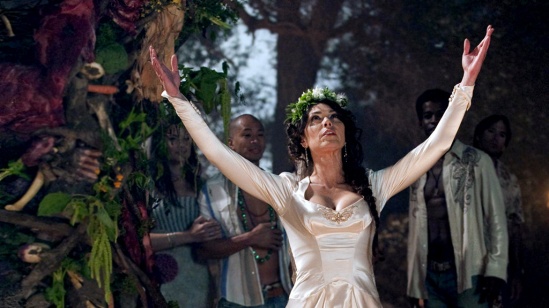Unlike a lot of races, dwarves have very strong expectations tied to them. Dwarves are expected to be regimented, boisterous, duty-bound. They must have had the at least one of the following jobs: soldier, smith, merchant, or miner.

Head Dwarf: A – wizard?
Hermey: Well, we need one up here. I’ve been studying. It’s fascinating; you’ve no idea. Conjurations and summonings and evocations…
Head Dwarf: [interupts] Now listen, you: you’re an dwarf, and dwarves make pointy things. Now, get to work!
The Hobbit shows us how dwarfs have traditionally been pictured: bearded, warrior-like, loyal, jovial, and, at least in the case of Bombur, a little dimwitted.
These dwarves’ names first appeared in the Poetic Edda, our source of Norse mythology in the Völuspá, all in roughly four sections of the poem. That list even includes Thorin’s family line, Balin’s family line, and Durin, founder of Moria, as well as Gandalf.
The word used in the poem, dverfar, transmuted into dwarf, but also appears in the dwarves’ nasty cousins, the duergar.
But that leads to how I was to present this particular race which has all of these expectation, and for that, let’s look at another obession of mine, the Dragon Age franchise.
In this rpg series, the dwarves revere their anscestors not quite as full-fledged gods nor in many mystical ways that would be seen in other churches across the world and its races. They seem more tuned into the Stone, where they believe they were created and return. This has some seeds that I like more than assigning the race a deity like Moradin who has to to fill too many roles as a god of dwarves; even the lesser deities seem watered-down versions of him.
Instead, to reflect the clannish nature of dwarves, which is also an expectation, I think dwarves would work best as ancestor worshipers who also believe in reincarnation.
Basically, this religion can’t be discussed outside dwarf culture, so this description will be a mix.
Dwarves, firstly, revere their ancestors as pinnacles of what a dwarf should be. Think the elves fromEberron sans the living dead part. Dwarves go to great lengths to highlight what their families have accomplished. In reality, they are a lot like the nobility in Ancient Rome.
In Ancient Rome, the patrician class was divided into clans. Gaius Julius Caesar belonged first to his clan, the Julii, the his more immediate family, the Caesares, leaving his first name Gaius, one of the few first names Roman patricians used.
Patricians also kept busts of famous ancestors in the foyer to display their importance to history. If one of these fell, it was a sign of disfavor for ancestors and of bad luck.
My dwarves will essentially do the same thing. This will also translate into their government.
Dwarves operate city-states, each belonging to individual clans (I’ll do a post on these later on), which will be part of a confederation headed up by the heads of each clan, which will elect two dwarven kings, who jointly rule and pass policy on all dwarven society.
This focus on clan is also part of punishment of dwarves who break the traditional laws, again another post.
But, as for the religious aspects of their lives, I’ll start with the dwarves who earn the highest honor. Dwarves who have accomplish legendary greatness (e. g. finding new, large veins of ore; leading an army to a major victory; developing a new forging technique that results in stronger weapons or armor; finish an important arcane tome) have the privilege of having their souls bound to an item that was important to them.
Many great generals are bound to their weapons, mage to tomes and staves, blacksmiths to forges, politicians to ledgers. Temples for each clan’s ancestor worship spring up around these items. Also, legendary individuals are selected by the high priests of all clans at a meeting held every year. This prevents one clan from claiming lesser dwarves are worthy, adding more prestige than is truly due to the clan.
Of course, in places where clans have died out or disappeared, several of these items are waiting to be discovered.
Now, tying soulbinding to other aspects of the dwarven religion, I need to discuss the reincarnation bit. Just like the Romans who used only a few first names, Dwarves are notorious name reusers. When a dwarven child is born, the local priests undergoes a connection to the ancestral pool of divine energy, discerning which dwarf is reborn in the baby. The priest, not the parents, give the child his true name, though parents often come up with a nickname for the child.
Why is this done? Because that soul has not been perfected yet. In the case of the soulbound dwarves, belief holds that they have finally achieved perfection, and their names are subsequently never used for the name of a child again.
Because dwarven names imply what a young dwarf should do, most dwarves have their lives planned out for them. There is the occasional individual whose name suggests magic but he or she chooses weapons, but that is rare, and sometimes those individuals rise to the soulbound.
There are a few who break altogether from that notion, who become the Soulless, those who become outcasts. Some choose the life as Soulless while others have it thrust upon themselves as punishment.
Now, this post had a lot of cultural and governmental information, especially about clans and their operations. That will probably have to be next week’s post. So I hope that will clear up any confusion from this post.







